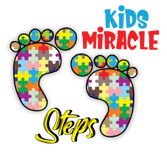Asthma leads to many missed school days for kids in the United States. Knowing how to control a child’s asthma is key. With good management, kids can have fewer asthma attacks and better lives. Parents can help by following medication schedules, avoiding asthma triggers, and going for regular check-ups. Learning about an asthma action plan is also very helpful. It gives families the power to manage the disease better.
Imagine your child with fewer asthma problems, living an active life. This can happen with proper guidance and action. Want to know how to manage your child’s asthma at home? Here are key asthma tips for kids. They’ll give you and your child confidence to handle asthma. Knowing early warning signs and having medication ready are vital. Also, avoiding triggers like pollen will help prevent attacks.
We’re going to talk about ways to better manage your child’s asthma. This includes making an asthma action plan and daily habits for healthier living. With the right information, your child doesn’t have to miss out on the joys of childhood.
Understanding Asthma in Kids
Asthma is a long-term health condition that makes it hard to breathe. It happens because the air passages in the lungs get inflamed. To diagnose a kid with asthma, doctors often use lung function tests like spirometry. This test checks how fast and how much air a child can exhale. Tests for exhaled nitric oxide may also help in diagnosing asthma and finding the right treatment. Additionally, allergy skin tests can point out what triggers the asthma.
Spotting the symptoms of asthma in kids early is key to helping them quickly. These symptoms often include coughing a lot at night, making a wheezing sound, and having trouble breathing. Kids with asthma might also wake up coughing or wheezing, feel more tired, breathe quickly, or have stomach pains. Parents should keep an eye out for these signs and learn how asthma affects kids.
Kids with asthma often need to use a reliever inhaler more than three times a week. This helps them keep their symptoms under control. Quick-relief medicines, like short-acting beta agonists, work fast to ease symptoms during an asthma attack. Inhaled corticosteroids are usually the best choice for controlling asthma over time. They are safe and work well. Sometimes, kids might also need other medicines like leukotriene modifiers or combination inhalers.
For asthma caused by allergies, treatment options may include antihistamines, corticosteroids, and allergy shots. This is known as immunotherapy. There are also special medicines called biologic drugs for severe asthma types. Drugs like dupilumab and omalizumab are options for children older than 6.
It’s very important for parents and those who take care of kids to understand asthma well. Talking to children about asthma helps them know when an attack is happening and why following their treatment is crucial. A tailored asthma action plan can make a big difference. It helps kids handle their asthma so they can enjoy life more.
Here’s an overview of common symptoms and management strategies:
| Symptom | Description |
|---|---|
| Coughing | Especially at night, indicating airway inflammation. |
| Wheezing | A whistle-like sound during breathing due to narrowed airways. |
| Breathlessness | Difficulty in breathing, often during physical activity. |
| Increased Tiredness | Children may feel fatigued due to disrupted sleep from symptoms. |
| Tummy Aches | Associated discomfort in the stomach area. |
Knowing how to manage asthma symptoms well is very important for kids’ health. When parents and caregivers are informed about asthma, they can give their kids the best care. This supports the kids’ health and happiness.
Creating an Asthma Action Plan
It’s crucial to make a strong asthma action plan for kids. Work with healthcare pros to make it fit the child’s needs. This plan covers daily care, meds, and steps for asthma attacks.
Following the guidelines lessens asthma issues. Watching symptoms closely and tweaking the plan improves life for the child.
Key parts of the plan include:
- Daily Management: This talks about sticking to meds and making life changes.
- Monitoring Symptoms: It’s about keeping an eye on signs and peak flow numbers to catch problems early.
- Recognizing Triggers: Knowing and avoiding things that make asthma worse helps prevent bad episodes.
- Handling Exacerbations: It gives clear steps for an asthma flare-up, including how much medicine to take and when to get help.
Using a quick-relief inhaler less often means good asthma control. A well-followed plan lets the child enjoy daily activities with little to no asthma trouble.
Identifying and Avoiding Triggers

Finding and staying away from things that cause asthma issues in kids is crucial. Common triggers include pollen, pet dander, and cold air. Knowing these triggers helps make a safer space for kids.
Working with doctors to test for allergies can pinpoint what causes asthma. This is key for families looking for ways to stop asthma problems. See the table below for common triggers and ways to avoid them:
| Trigger | Prevention Strategy |
|---|---|
| Allergens (pollen, pet dander) | Regular cleaning, using air purifiers, and keeping pets out of bedrooms |
| Respiratory infections | Washing hands often, staying away from sick people, and getting flu shots every year |
| Cold air | Using scarves or masks to cover mouth and nose when it’s cold |
| Smoke (tobacco, incense, fires) | Having a smoke-free house, using unscented candles, and avoiding smoky places |
| Mites and pests | Washing bedsheets in hot water weekly, using covers for mattresses, and keeping pests away with cleanliness |
Aside from dodging certain triggers, parents need to watch and boost overall health. Making sure kids stay active helps manage asthma better. Avoiding foods with sulfites, washing pillows every week, and pest control are good too. Getting allergy shots and using asthma medicines regularly also prevent bad asthma attacks.
Simple Tips to Help Manage Asthma
Managing asthma means always being vigilant and prepared. To tackle pediatric asthma, start by making the home environment dust-free. Regular cleaning reduces triggers. Use of air purifiers and keeping humidity levels between 30% and 50% helps prevent mold. Taught early, children can learn to recognize asthma symptoms. Knowing how to use inhalers or nebulizers empowers them. This helps them manage their condition better.
It’s crucial for children to always carry their asthma medication. Seeing healthcare providers regularly is key for ongoing care. These visits allow for updates to treatment plans and more tips.
Avoiding asthma triggers is essential. Pet dander, pollen, and mold can provoke asthma attacks. Air conditioning lowers pollen in the air. Also, change air conditioner filters to lessen allergen exposure.
In some countries, access to essential asthma inhalers is limited. Despite this, taking steps to manage asthma can lead to better health. Community efforts, like those by Kids Miracle Steps, highlight child safety and health. They stress on prevention, communication, and careful observation during health emergencies like COVID-19.
Adopting these asthma care strategies can enable children to enjoy healthier lives. The Global Alliance Against Chronic Respiratory Diseases (GARD) aims to lessen the impact of asthma worldwide. By being well-informed and proactive, families enhance their control over pediatric asthma.
Read more: Global Alliance against Chronic Respiratory Diseases (GARD)
Importance of Regular Medical Check-Ups
According to CDC, over 7 million kids in the U.S. have asthma. This makes regular medical check-ups a must for good management. At these check-ups, doctors look over the treatment plans. They check if they’re working or need changes.
Checking lung function is a big part of managing asthma. Since kids have smaller airways, they’re more likely to wheeze, especially at night. Regular check-ups help keep track of lung health and control symptoms.
Most kids with asthma use inhaled corticosteroids to keep it under control. However, some kids still struggle with their asthma symptoms. Regular doctor visits are key for spotting these issues and looking for other treatments.
At these visits, doctors give advice on how to handle asthma. This helps kids and parents manage asthma better. For young kids, these check-ups are even more important because they wheeze more when sick.
| Asthma Control Levels | Symptoms | Nighttime Awakenings | Effect on Daily Activities | Quick-Relief Inhaler Use | Lung Test Readings |
|---|---|---|---|---|---|
| Well Controlled | 2 days a week or fewer | 2 times a month or fewer | None | 2 days a week or fewer | More than 80% |
| Poorly Controlled | 1 to 3 times a week | 1 to 3 times a week | Some limits | More than 2 days a week | 60% to 80% |
| Very Poorly Controlled | 4 times a week or more | 4 times a week or more | Extremely limiting | Several times a day | Less than 60% |
Regular reviews are key for a good asthma care plan. They help tailor the management plans. With asthma being a common issue among kids, these check-ups can really help manage it well.
Promoting a Healthy Lifestyle
Promoting a healthy lifestyle is key in managing asthma in children. It involves a mix of factors that can keep symptoms in check. This improves life for kids with asthma. Eating well, staying active, keeping a healthy weight, and not being around smoke are important.
Keeping a healthy weight can make a big difference. Sadly, over half of asthma inhaler users are doing it wrong. This shows we need better education on using inhalers right. Eating fruits and veggies helps boost the immune system and lower swelling. This is good for kids with asthma.
Being active helps a lot in making lungs stronger and improving health. Many top athletes with asthma show that kids can still do sports. It’s crucial to warm up and stay safe in bad weather. Limit outdoor activities when the air is dirty to prevent asthma attacks. If symptoms like chest tightness or trouble breathing happen, it’s vital to use fast-acting inhalers and relax.
Knowing what triggers asthma and avoiding it can reduce medication use. It can also lower the risk of asthma attacks and improve lifestyle. Staying away from smoke and handling stress well are key to preventing asthma problems. These steps should be everyday habits for kids with asthma.
These lifestyle changes are a big part of promoting healthy habits for asthmatic kids. It helps in lowering the need for emergency care and hospital visits because of asthma issues.
Conclusion
Managing asthma in kids needs education, proper treatment, and prevention. Nearly 26 million Americans, or about 1 in 13, have asthma. A customized asthma action plan helps tailor care for your child. Avoiding triggers like pollen and dust mites is crucial. Medications help control coughing and wheezing. It’s important to stick to the medication plan. Exercises that strengthen the lungs, like swimming, are good. Managing stress is also key, as stress can make asthma worse. Keeping the air at home clean helps too. For more help, check Kids Miracle Steps.






